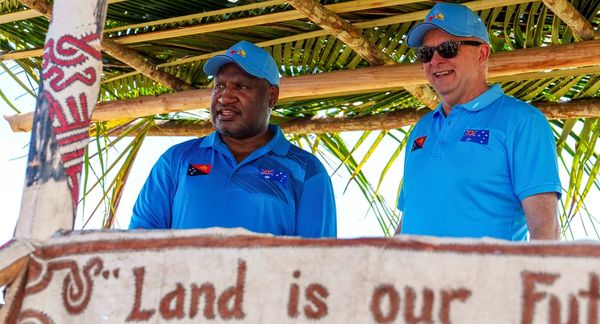
Leading shark scientists have called for calm after the tragic death of a male swimmer at a beach in Sydney’s east on Wednesday.
Dr Vanessa Pirotta, a marine predator researcher at Macquarie University, said the incident at Little Beach had shaken the community because of its sheer randomness.
“It’s not every day you hear of a shark incident like this was,” she said. “That’s why there’s so many people talking about it, and the fact people have seen it first-hand means there’s a lot that plays on people’s minds.”
Swimmers have been warned against entering the water at 13 of Sydney’s beaches, from Bondi in the east to Cronulla in the south, after the remains of a 35-year-old man were found on Wednesday afternoon.
New South Wales police are continuing to scour the water looking for the shark responsible, while the NSW Department of Primary Industries (DPI) deployed six SMART drumlines on Thursday morning from Little Bay beach to Long Bay.
Surf lifesavers were using drones and jet skis to check the immediate area.
Pirotta said the community’s shock was understandable, but it was also important to remember sharks still played an “important ecological role” in Australia’s marine environment.
She said there was no need for beachgoers to feel there was a heightened risk swimming in the coming days.
“Remember people do swim in the water every day, and this unfortunately has resulted in a tragic, uncommon event,” she said.
“Beachgoers will be thinking about their actions which is completely normal … my advice is adhere to swimming between flags and where there’s surveillance in areas well patrolled.”
The attack was the first shark-related fatality in Sydney waters since 1963.
On Thursday afternoon the Department of Primary Industries confirmed the species responsible was likely to be a great white shark at least three metres in length based on provided footage.
Pirotta said the shark could have been passing through the area for a number of reasons including following prey as well as favourable currents or water temperatures.
“Unfortunately it’s an opportunistic incident,” she said. “If we look at white shark distribution in Australia, they’re known to be found along the coastal areas as well as shelves and continental areas.
“[But] shark incidents like this do not happen every day, this is why we’re so taken aback.”
The average number of shark incidents in Australia has risen to 12.5 a year in the past decade compared to 6.5 during the 1990s, but still remains relatively low and fatalities have decreased.
According to the Australian Shark Attack File maintained by Taronga Conservation Society there were 17 unprovoked shark attacks in 2021. Of those, three were fatal, 11 caused injury and three people were unharmed.
The odds of being killed by a shark in Australia are one in 8m, similar to that of being killed by a kangaroo.
The increase in shark incidents is linked to Australia’s growing population, rather than more sharks. In fact, there has been a significant decline in coastal predators in the past 50 years. According to a 2018 study conducted on the east coast, the number of great white sharks had declined by 92%.
Dr Leonardo Guida, shark scientist at the Australian Marine Conservation Society, said shark bites were traumatic incidents which “while rare, require[d] thoughtful, evidence based action”.
“First of all we want to extend our sympathies to the friends and family of the swimmer who died in this tragedy, first responders and to those who witnessed it,” he said.
“Empathy, respect and clear communication are crucial – it’s an emotionally charged event for local communities and the feeling of anger is perfectly understandable.”
But he said installing drumlines or using shark nets to catch and kill sharks were less effective at improving safety compared to the use of newer technology like drones and warning systems.
Queensland has reduced the number of beaches where shark nets and drumlines are used to 86 beaches, as it trials new technology including drones and smart drumlines.
Last year, the Humane Society International found nearly 80% of sharks caught on drum lines in the Great Barrier Reef marine park in 2020 died, despite an administrative appeals tribunal ordering the government to move to a nonlethal program.
In NSW, a shark management program was expanded last year to place drumlines that provide real time alerts at 170 beaches and use shark-spotting drones at 50 beaches.
Western Australia’s shark culling program was abandoned in 2014 after an evaluation by the state’s Environmental Protection Authority.
“Baited hooks and dead animals caught in shark nets can attract more sharks to the area,” Guida said.
“We have the tools and knowhow to modernise and improve beach safety standards that benefit humans and wildlife alike.”







